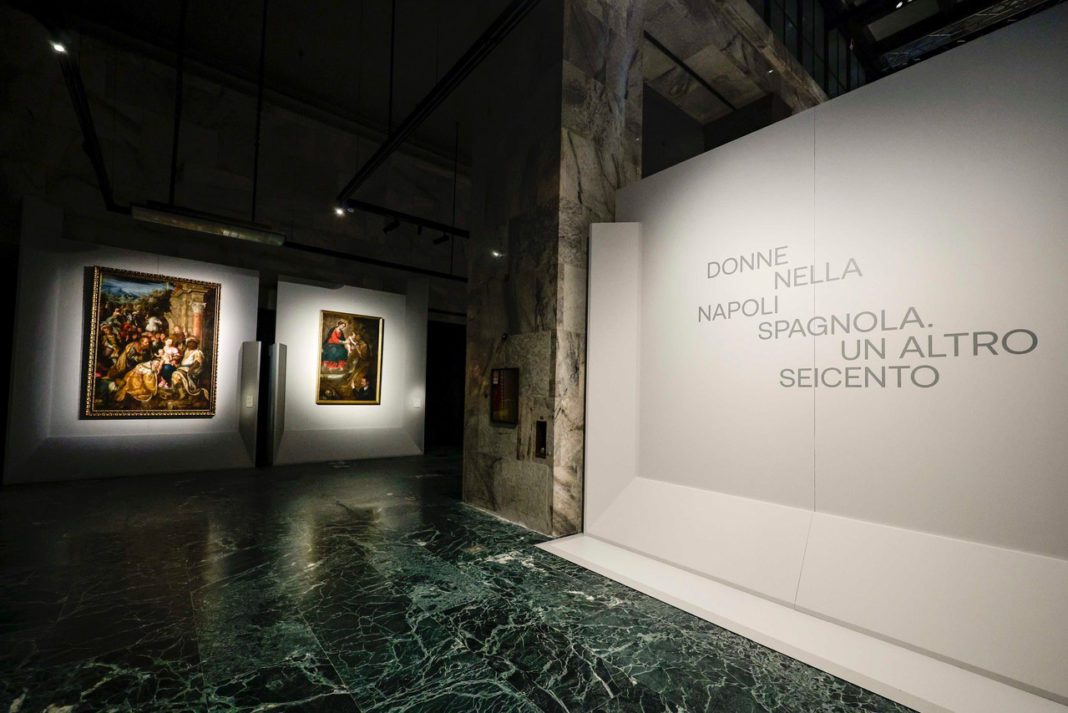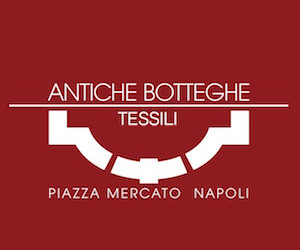“Donne nella Napoli spagnola. Un altro Seicento” . Da domani 20 novembre fino al 22 marzo 2026, Gallerie d’Italia Napoli ospita la mostra a cura di Antonio Ernesto Denunzio, Raffaella Morselli, Giuseppe Porzio ed Eve Straussman-Pflanzer, dedicata al ruolo femminile nelle arti del seicento a Napoli.
Realizzata con il patrocinio istituzionale dell’Ambasciata di Spagna in Italia, il patrocinio del Comune di Napoli e la partecipazione dell’Università di Napoli L’Orientale, presenta sessantanove opere tra dipinti, disegni, manoscritti, sculture e manifatture provenienti da importanti musei italiani e internazionali, tra cui il Museo del Prado di Madrid, le collezioni reali spagnole, la National Gallery di Washington e la Fundación Casa Ducal de Medinaceli di Siviglia, con un grande capolavoro di Ribera che ritorna eccezionalmente a Napoli.
Non solo Artemisia Gentileschi che ha lavorato a lungo a Napoli e di cui è stata proposta già una rassegna monografica tra il 2022 e 2023. Adesso lo sguardo si allarga all’intero secolo e ad altre protagonista dell’arte, pittrici sui cui non si era soffermata un’attenzione tale da proporle al pubblico.
Fondato su nuove ricerche d’archivio, recuperi conservativi e specifiche campagne fotografiche, il progetto rappresenta un solido punto di partenza per ogni futura indagine in un campo di studi ancora poco esplorato.
Si comincia con le forestiere Lavinia Fontana (colta artista bolognese, figlia di Prospero) e la milanese Fede Galizia (suo padre era Nunzio, pittore e miniaturista trentino) tra r ritratti e pale d’altare che testimoniano le fitte trame commerciali, collezionistiche e sociali di cui la città fu crocevia.
Un momento cruciale della storia artistica del Seicento napoletano, e quindi del percorso della mostra, è rappresentato dal soggiorno dell’infanta Maria d’Austria, sorella di Filippo IV e regina d’Ungheria, tra l’agosto e il dicembre 1630: un evento di grande risonanza “mediatica”, dalle significative implicazioni per la storia dell’arte e per quella di genere. In mostra, il volto dell’infanta eseguito da Diego Velázquez (dal Museo del Prado) e quello, sconvolgente per forza realistica, di Maddalena Ventura, la celebre “donna barbuta” degli Abruzzi, realizzato da Jusepe de Ribera per il viceré duca di Alcalá (prestito eccezionale della Fundación Casa Ducal de Medinaceli).
Tra le protagonista anche Giovanna Garzoni da Ascoli Piceno e la napoletana Diana Di Rosa, detta Annella di Massimo (Stanzione), cui è riservato molto spazio: Annella costituisce il vero e proprio corrispettivo napoletano di Artemisia.
Una sezione speciale è riservata a due celebri dive napoletane del Seicento: Andreana Basile, la più grande cantante del suo tempo, contesa dalle corti italiane, e Giulia Di Caro, la cui straordinaria parabola – da meretrice a impresaria teatrale – costituisce un impressionante esempio di emancipazione femminile e di riscatto sociale.
Infine opere di autrici meno note, come Teresa Del Po, attiva tra Roma e Napoli – «pittrice, diligentissima miniatrice ed accuratissima intagliatrice in acquaforte», secondo Leone Pascoli – e la ceroplasta Caterina De Julianis. Queste ultime due testimoniano il contributo delle donne delle arti applicate: la loro presentazione è arricchita dal confronto con opere prodotte nel loro stesso ambiente e, nel caso di De Julianis, da un ambizioso dialogo con la scultrice barocca andalusa Luisa Roldán, esponente di quella comune cultura mediterranea di cui Napoli era parte integrante. Accompagna la mostra il bel catalogo pubblicato da Allemandi.
Per saperne di più
Learn more
https://gallerieditalia.com/it/napoli/

Gallerie d’Italia Naples/ Women in Spanish Naples, not only Artemisia Gentileschi. Diana di Rosa and the others: the genius of the 17th century female artists
‘Women in Spanish Naples. Another Seventeenth Century’. From tomorrow, the 20th of November, until the 22nd of March 2026, Gallerie d’Italia Napoli is hosting the exhibition ‘Women in Spanish Naples. Another Seventeenth Century’, curated by Antonio Ernesto Denunzio, Raffaella Morselli, Giuseppe Porzio and Eve Straussman-Pflanzer, dedicated to the role of women in the arts of the seventeenth century in Naples.
Organised with the institutional patronage of the Spanish Embassy in Italy, the patronage of the Municipality of Naples and the participation of the University of Naples L’Orientale, it presents sixty-nine works including paintings, drawings, manuscripts, sculptures and artefacts from important Italian and international museums, including the Prado Museum in Madrid, the Spanish royal collections, the National Gallery in Washington and the Fundación Casa Ducal de Medinaceli in Seville, with a great masterpiece by Ribera returning exceptionally to Naples.
Not only Artemisia Gentileschi, who worked extensively in Naples and who was already the subject of a monographic exhibition between the years 2022 and 2023. Now, the focus has broadened to encompass the entire century and other leading figures in art, female painters who had not previously received sufficient attention to be presented to the public.
Based on new archival research, conservation work and specific photographic campaigns, the project represents a solid starting point for any future investigation in a field of study that is still fragmented.
It begins with the foreign artists Lavinia Fontana (a cultivated artist from Bologna, daughter of Prospero) and Fede Galizia from Milan (her father was Nunzio, a painter and miniaturist from Trentino) with portraits and altarpieces that bear witness to the dense commercial, collecting and social networks of which the city was a crossroads.
A crucial moment in the artistic history of the 17th century in Naples, and therefore in the exhibition, is represented by the stay of the Infanta Maria of Austria, sister of Philip IV and Queen of Hungary, between August and December 1630: an event of great “media” resonance, with significant implications for art history and gender history.
On display are the portrait of the Infanta by Diego Velázquez (from the Prado Museum) and the strikingly realistic portrait of Maddalena Ventura, the famous “bearded woman” from Abruzzo, painted by Jusepe de Ribera for the Viceroy Duke of Alcalá (on exceptional loan from the Fundación Casa Ducal de Medinaceli).
Among the protagonists are Giovanna Garzoni from Ascoli Piceno and Diana Di Rosa from Naples, known as Annella di Massimo, to whom much space is devoted: Annella is the true Neapolitan counterpart of Artemisia.
A special section is reserved for two famous Neapolitan divas of the 17th century: Andreana Basile, the greatest singer of her time, sought after by Italian courts, and Giulia Di Caro, whose extraordinary journey – from prostitute to theatre impresario – is an impressive example of female emancipation and social redemption.
Finally, there are works by lesser-known female artists, such as Teresa Del Po, who was active in Rome and Naples – “a painter, a diligent miniaturist and a meticulous etcher”, according to Leone Pascoli – and the wax sculptor Caterina De Julianis.
The latter two testify to the contribution of women in the applied arts: their presentation is enriched by comparison with works produced in their own environment and, in the case of De Julianis, by an ambitious dialogue with the Andalusian Baroque sculptor Luisa Roldán, an exponent of that common Mediterranean culture of which Naples was an integral part. The exhibition is accompanied by a beautiful catalogue published by Allemandi.










